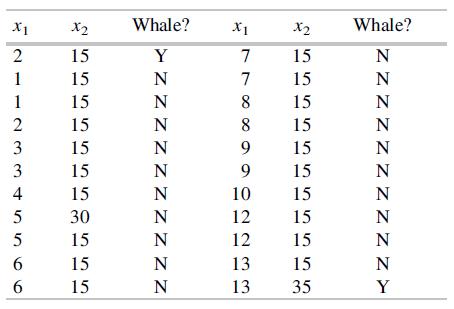Whale-watching is big business in Alaska, particularly around salmon release sites where whales tend to congregate. The
Question:
Whale-watching is big business in Alaska, particularly around salmon release sites where whales tend to congregate. The article “Humpback Whales Feed on Hatchery-Released Juvenile Salmon” (Roy. Soc. Open Sci. 2017) reported a study to determine what factors help predict the likelihood of spotting a humpback whale when visiting one of these sites. The following data on x1 = days after final salmon release, x2 = duration of visit (min), and whether a whale was sighted are from a recent year at Little Port Walter.

(The full study investigated five sites across several years before, during, and after salmon release.)
a. Use software to fit a multiple logistic regression model to this data, and confirm that the estimated log-odds function is −5.68 − .096x1 + .210x2.
b. What does the negative sign for the coefficient–.096 signify? What does the positive sign for the coefficient .210 signify?
c. Estimate the probability of spotting a humpback whale during a 30-minute tour one week (i.e., seven days) after the final salmon release.
d. 
e. Interpret both e–.096 and e.210 in this context.
Step by Step Answer:

Modern Mathematical Statistics With Applications
ISBN: 9783030551551
3rd Edition
Authors: Jay L. Devore, Kenneth N. Berk, Matthew A. Carlton





